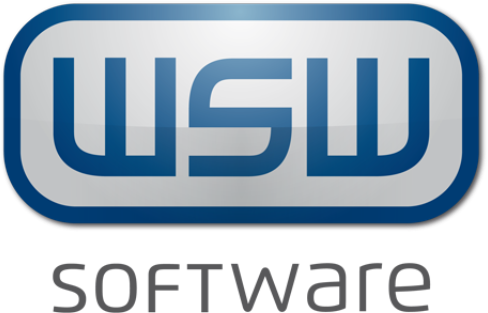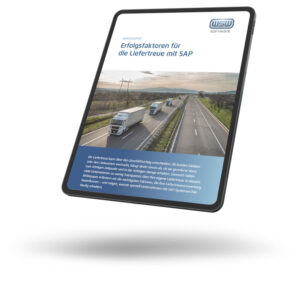Kanban describes an approach to process control that follows the pull principle. To this end, the method is geared to local demand and reduces inventories. Properly implemented, it is thus possible to comprehensively optimize the value chain, reduce throughput times and minimize capital commitment.
Kanban - origin and meaning of the method
The Kanban method is a system of decentralized production control for processes that are based on the just-in-time method. The system was invented in the 1950s by Taiichi Ohno, an engineer at Toyota in Japan. His idea was based on the replenishment process used by American discounters. These determined the amount of products to be replenished on the shelf by the goods sold, as recorded at the cash register. What went over the counter was then replenished on the shelf. This saved them the process of recording these gaps on the shelves separately.
In contrast to central planning approaches, individual production and logistics processes such as replenishment or material flow are triggered starting from data cards when kanban methods are applied. These data cards are called kanban, which means "color card" or "receipt" in Japanese. They contain the most important data of a production part and are used to track the material flow in production.
The core of the Kanban method is therefore the decentralized management of inventories. When material for production is consumed at the processing location, the consumed quantities are reordered. In this way, exactly the materials to be processed are at the right place at the right time in sufficient quantities.
How do Kanban and eKanban work?
Since the emergence of the Kanban method, the progress of digitalization and modernization has led to further developments. The result is eKanban, a digitized and program-based version of the former paper-based method.
Kanban: definition and functionality
The basis for Kanban is the Just-in-time provision of goods that are needed in production. This means that the material flow is accurately matched to production, which means that hardly any storage capacity is required at the production site.
Storage costs and capital commitment are significantly reduced by the Kanban method; overproduction is avoided and waiting times are minimized. The aim is to optimize the profitability of an overall production and to simplify processes and their planning effort.
To enable reliable just-in-time delivery to production, it needs an interface that enables instant communication between production and supplier.
In the Kanban method, the Kanban cards (made of paper) are responsible for this - control takes place via these cards. For this purpose, they contain relevant information for storage, delivery and purchasing such as:
- Destination
- Customer
- Supplier
- Time data
- Material / Article
- Quantity
Requirements for the introduction of a Kanban system
In order for a company to successfully use the Kanban system for production and logistics, the following requirements / aspects should be at least partially met:
- These are productions with a steady flow of material
- Production takes place with coordinated / defined cycle times
- Uniform material transport cycles
- It is continuous and smoothed production processes
- Typically, high-quality articles are produced
- The consumption of material should be well estimable / predictable
The two main types of Kanban
Generally, two types of Kanban cards are distinguished:
Transport Kanban:
This kanban card informs about the number of products to be reordered in order to be able to initiate the next production stage. It is therefore the link between production and supplier.
Production Kanban:
This Kanban card assigns the start of the production of a product. Successive production sections can thus communicate with each other.
eKanban
eKanban describes the electronic variant of the Kanban method. The paper cards are replaced by a computer system that maps the Kanban card on a digital Kanban board.
Communication between production and warehouse thus takes place via automated picking systems or special gates that issue status messages. If a supply container is filled too low, the eKanban triggers reordering. This signal is sent via a communication network to the control area, which contacts the warehouse. In this way, the container is replenished in good time without waiting for material and causing a production stop. At the same time, required storage space at the production site is minimized.
Kanban and eKanban in comparison
Compared to the traditional Kanban, the eKanban brings further advantages. Automation saves time and eliminates sources of error, which occur more frequently with manual handling. This has a positive effect on the economic efficiency of production and logistics. The specific advantage of eKanban is the digital mapping of processes. By the digitalization of the expirations, the Kanban principle experiences again an additional acceleration, since the manual handling is omitted. This results in further advantages, for example, inventories can be reduced again in some cases.
In addition, eKanban connects directly to an ERP system and provides real-time information on consumption, material produced and stock movements, eliminating manual handling.
Advantages & disadvantages of Kanban
Kanban as an overall control method brings special advantages for all processes that are part of the value chain. The most significant are:
- Lean warehousing: Since the Kanban method can avoid overproduction and the accumulation of stocks, inventories always remain low. Storage areas can be used optimally. Accordingly, the capital commitment remains low.
- Visualization: Whether Kanban or eKanban, the control method provides excellent clarity for the production and delivery phases.
- Optimized production chain: Bottlenecks can be avoided in the long term, the material flow can be designed efficiently and throughput times can be shortened.
- Clarity: No search times are incurred, as stock levels are low and only the relevant elements or components are available.
- Self-regulation: The Kanban control loops ensure that only the materials and quantities actually required are produced or transported. The introduction or use of a PPS is not necessary.
In addition to the above-mentioned advantages, it is nevertheless also necessary to take certain Disadvantages to be reckoned with. These would be:
- The implementation requires a detailed knowledge of process flows, material flow and many other factors
- When demand fluctuation is high, the method is often inefficient or unprofitable for production operations.
- In the event of failures, significant delays can occur in the production chain because the processes are finely tuned to each other.
- For the Kanban method to work, there is a high dependency on suppliers who must adhere to specific specifications and processes.
- The flexibility of Kanban is limited and cannot be easily adapted to changes in the process or in the production chain.
- Maintenance aspects are not automatically taken into account in Kanban - like a PPS. Here, the process managers have to readjust the Kanban control loops in coordination with the maintenance department, which contradicts the core idea of Kanban of a steady state.
The inventory management
Kanban in production
Since Kanban describes an approach to process control, the method is also used in the field of production and ensures improved processes there. The Kanban method is also related to the pull principle, which aims to achieve seamless production. To achieve this goal, buffer stocks are often used in production. Required materials are produced based on the trigger of a Kanban card. These materials are then produced and stored again as a production order is triggered. A production can thus act in a decentralized and self-regulating manner.
Kanban in logistics
In warehouses, eKanban is now frequently used, which is implemented using a warehouse management system. The Kanban method is particularly useful here to manage replenishment for shelves. As soon as an element is taken out, an impulse is given to replenish the used elements. Automatic replenishment can avoid a huge active planning effort that ties up capital, incurs storage costs and is less accurate to demand.
Should a company have more than one warehouse in operation or wish to manage suppliers' warehouses together, this network can also be successfully managed using the Kanban method as a hub for replenishment.
Conclusion: Optimized profitability through Kanban
The Kanban method ensures that processes and procedures in logistics and production are improved. Particularly decisive for this are the reduced inventories, lower capital commitment and higher demand quantity flexibility. Further on, effort and costs can be minimized.



